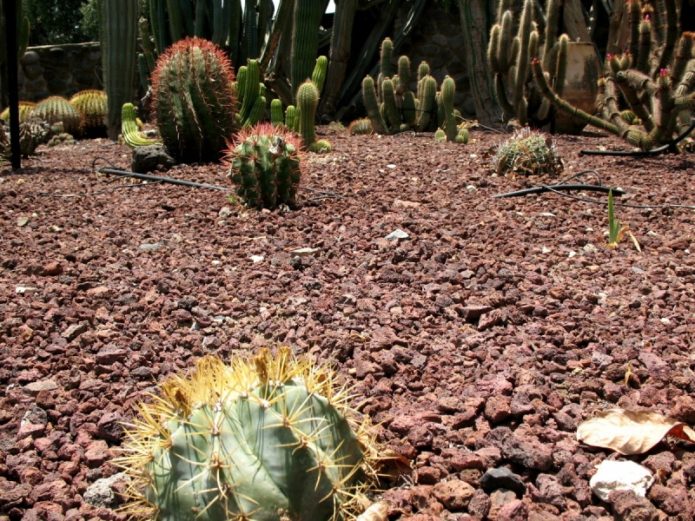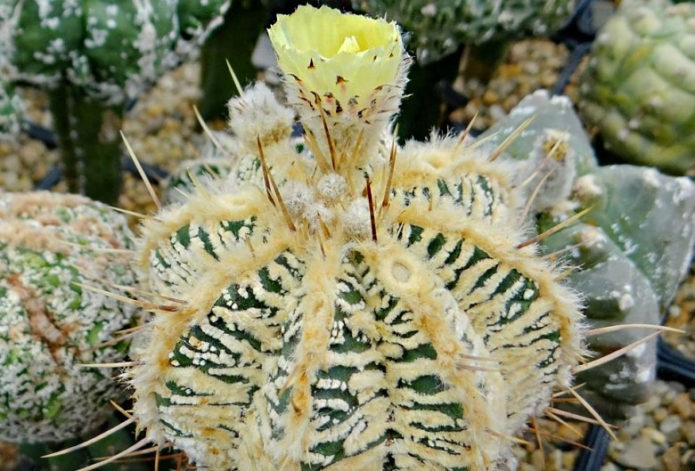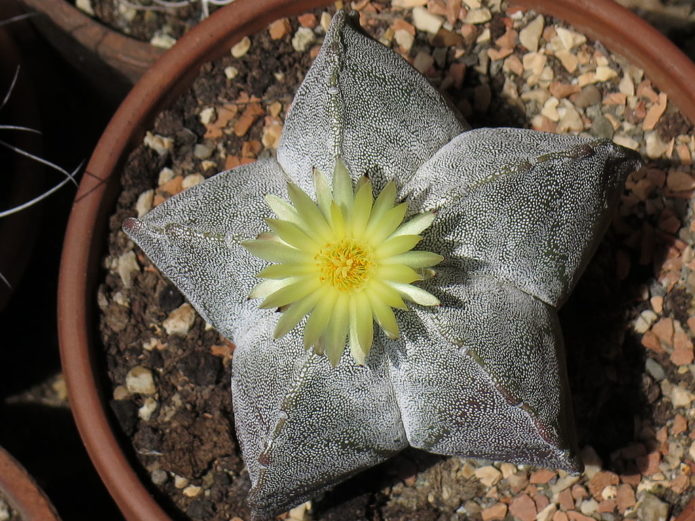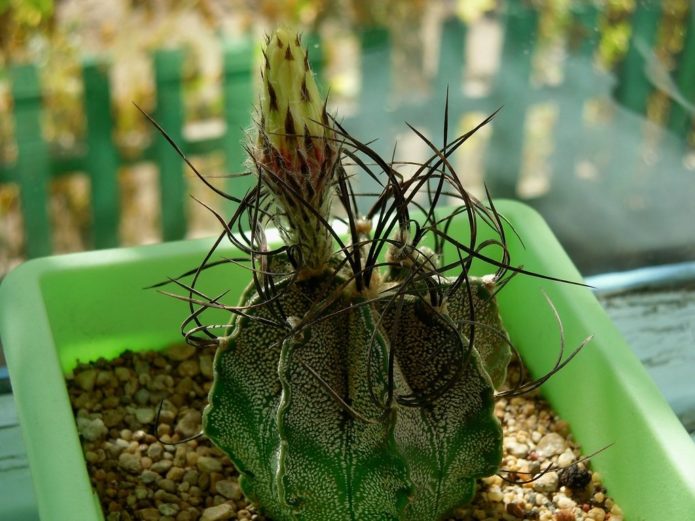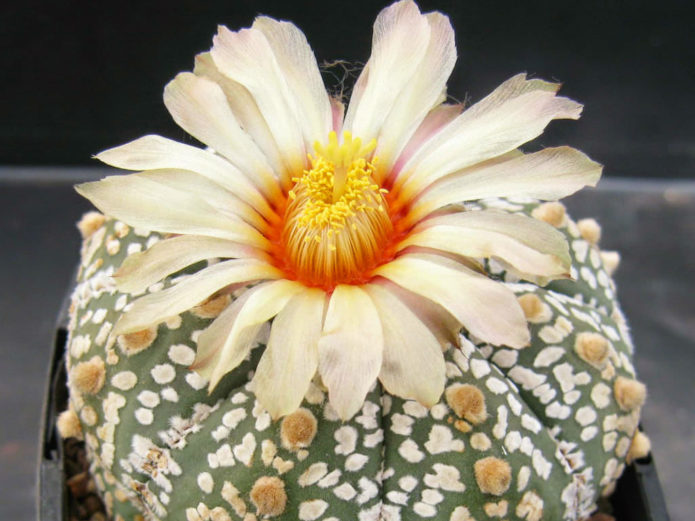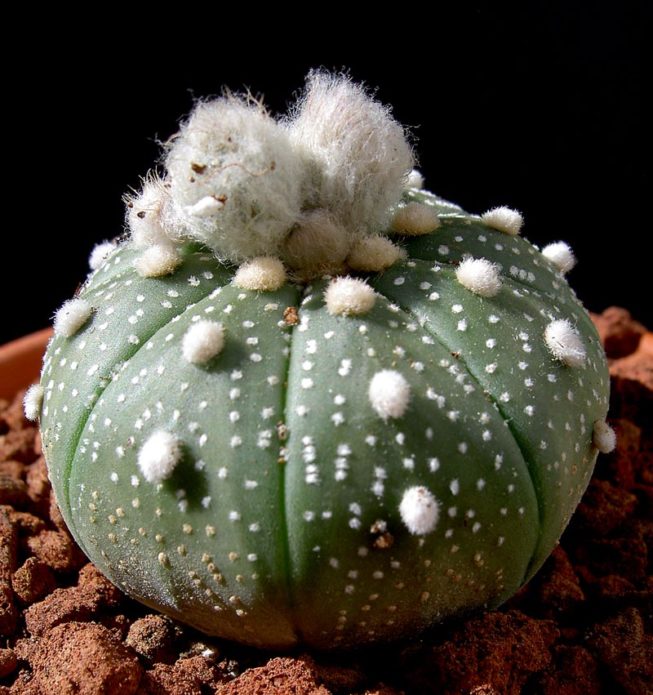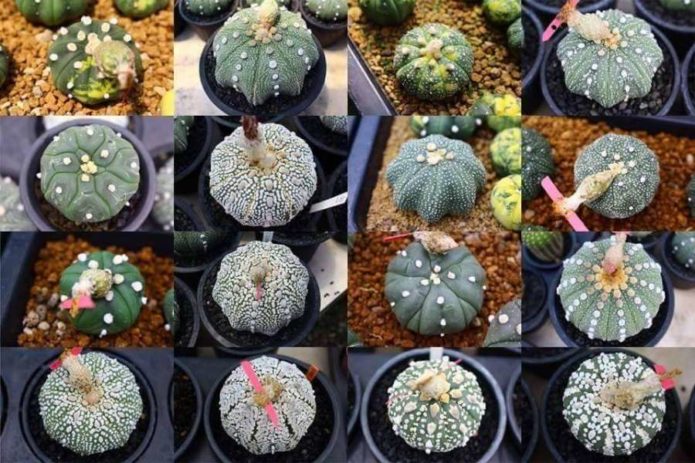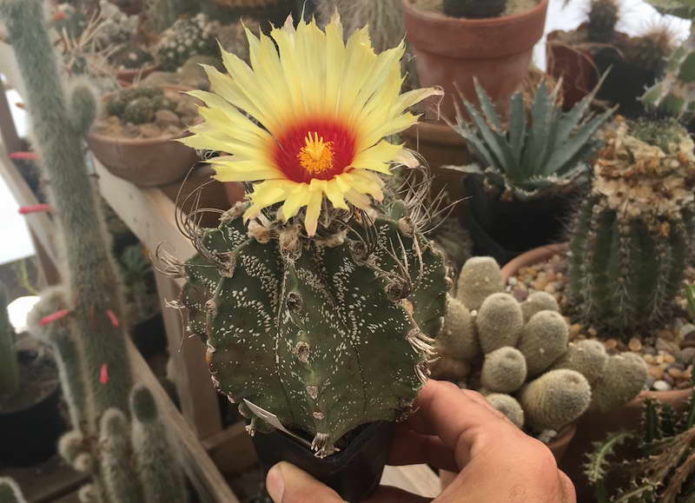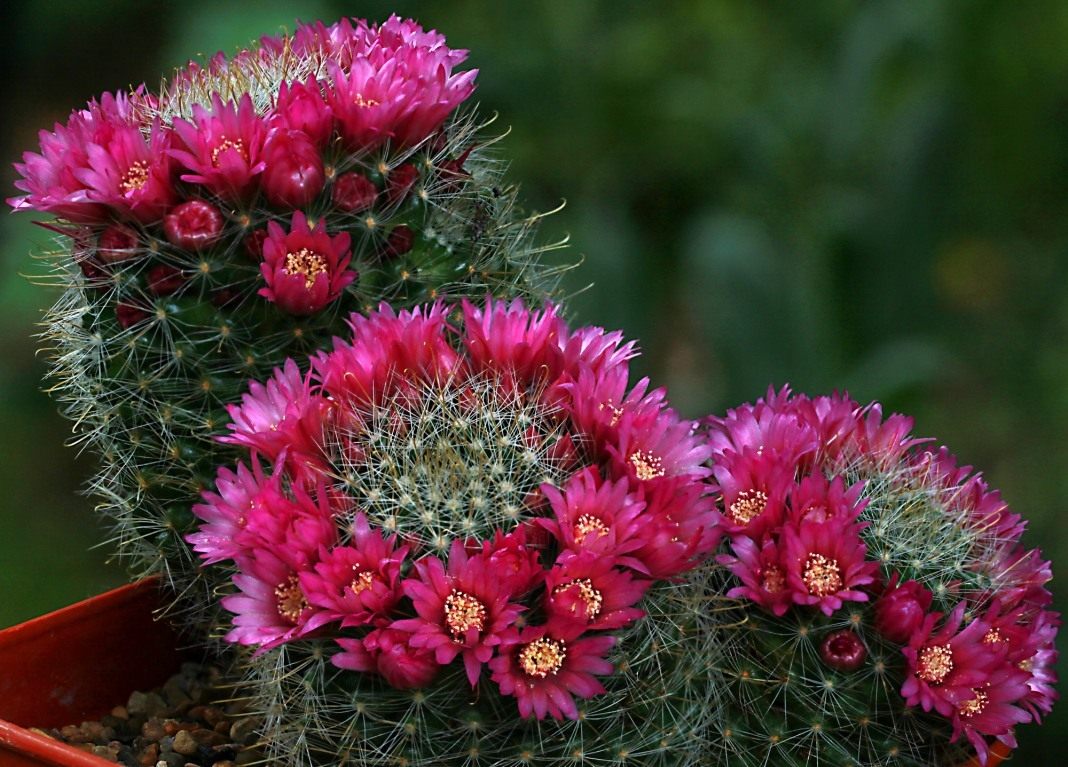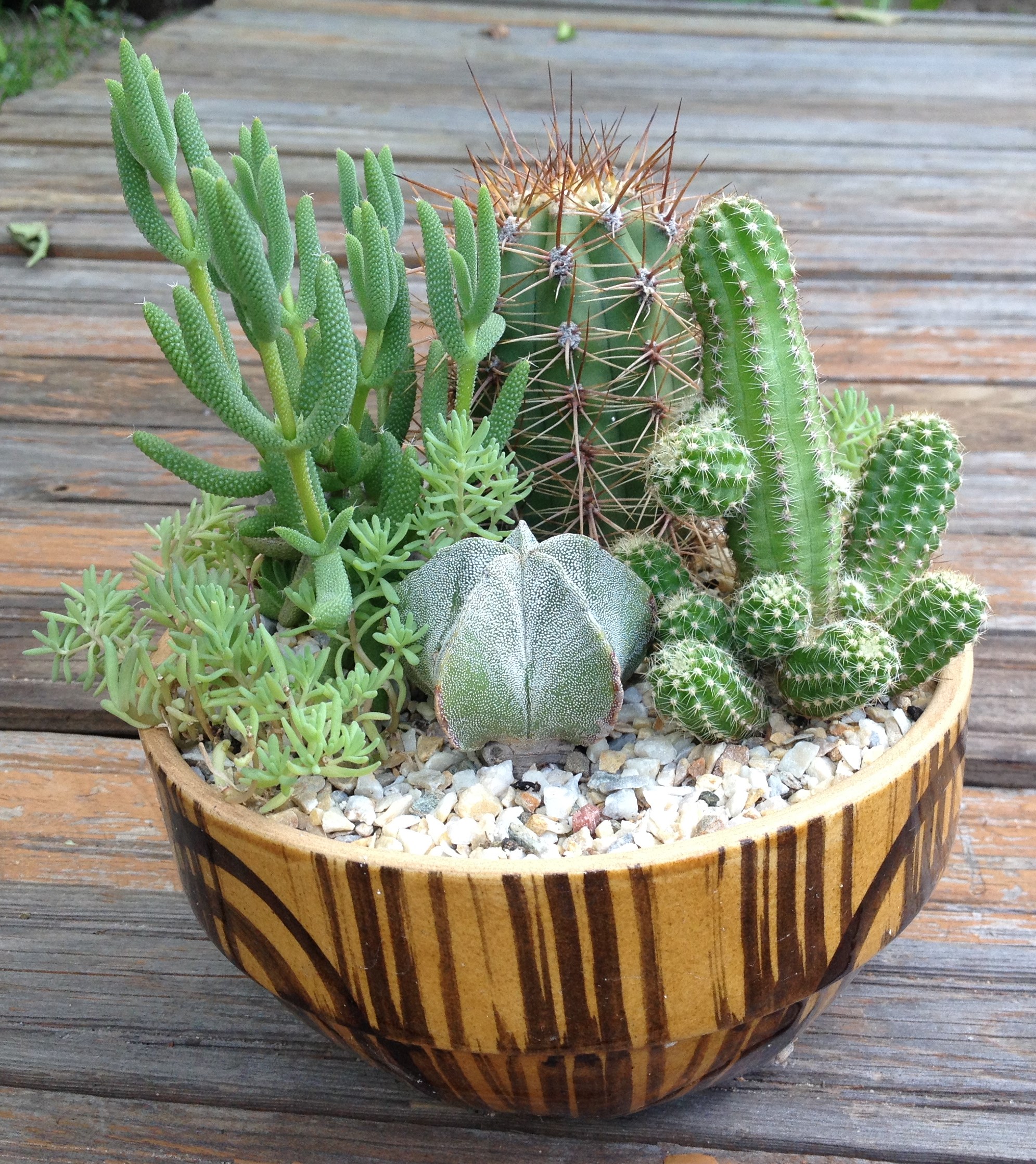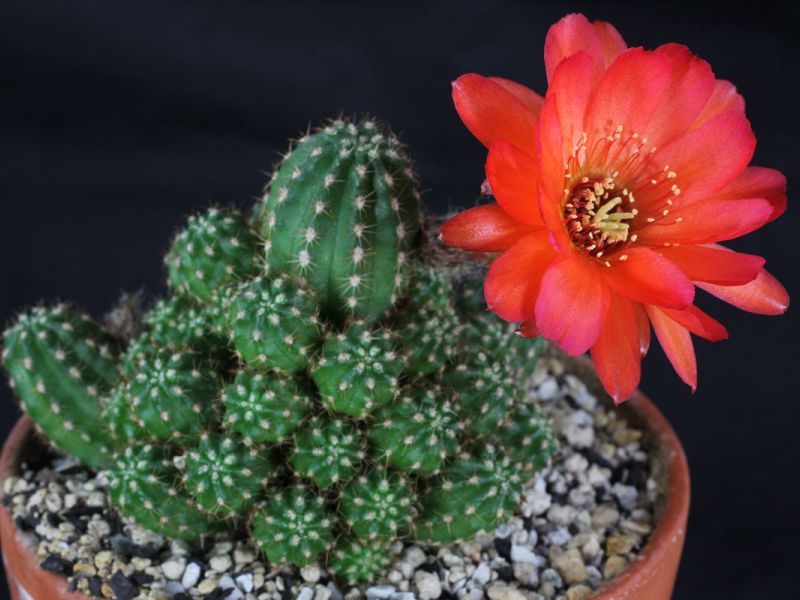Among indoor plants, cacti occupy a special place. These succulents with fleshy stems are the love of many growers. Astrophytum belongs to this type. Translated from Greek, the name means "star plant". Astrophytum earned this name for its characteristic shape. With a certain diligence, you can achieve the flowering of a cactus, which in itself is no small achievement.
Content
Astrophytum - what is this cactus?
Astrophytum belongs to the Cactus family. Its shape is spherical or cylindrical, representatives are small in height. A characteristic feature of most species upon external examination will be light specks on a greenish fleshy stem. If you look closely, you will see that these are bundles of hairs. They help the cactus to survive, as they are able to absorb moisture.
In natural conditions
The birthplace of astrophytum is the southern regions of the United States and northern Mexico, an area of semi-deserts and deserts. The regions of growth are characterized by a high level of insolation and a large difference between day and night temperatures. In this case, the air is not cooled below zero. Like other cacti, plants grow singly or in groups, but in nature, as well as at home, they do not grow tall. Astrophytum loves clay soils in its natural habitat, which should not be forgotten when breeding.
Who is suitable for breeding
Astrophytum is not selective: it is quite unpretentious. Therefore, the flower is suitable not only for sophisticated lovers of exotic succulents, but also for beginners in home plant growing. However, this does not mean that the overseas cactus will grow and bloom in any conditions. It also requires its own regime of watering and soil moisture, temperature and humidity, light regime, soil composition. Therefore, before starting an astrophytum, it is necessary to carry out at least minimal theoretical training so as not to be disappointed in the poor results that the plant will give with improper care.
The plant does not emit and does not accumulate any harmful substances. However, species with sharp thorns can pose a danger of an injection, so it is better to keep the cactus away from unintelligent puppies and small children.
Myths and superstitions about the prickly guest
Astrophytum itself is neither good nor bad. He just is, and whether you like him or not, it only affects whether he will be a welcome guest in your apartment. However, many people believe that plants have their own energy and can influence the thoughts and well-being of the owner. The energy charge of astrophytum, in their opinion, is typical for a cactus: due to its spherical undivided shape and thorns, it is closed to the transfer of energy and is generally negative.
At the same time, it can be useful for people who need control over themselves. Also, cactus is located in work rooms and at workplaces, because it supposedly absorbs the negative effects of electromagnetic radiation from household and office equipment. According to superstitions associated with the Cactus family, having an astrophytum in your house is to trigger loneliness and failure on the personal front. However, competent florists do not attach importance to these ideas.
Popular varieties for home breeding (with photo)
Although the discovery of the cactus took place back in 1827, and it has long been considered an established genus, researchers discovered new species until 2002. In addition, growers use the technology of crossing to obtain additional decorative varieties that are not found in nature. Several varieties of astrophytum are widespread, the cultivation of which has already become a classic.
Astrophytum thousand-speckled (myriostigma)
It was this species that was found by the discoverer of the astrophytum Galeotti. It is characterized by a great variety within the variety, which makes it possible to distinguish three groups, different in the area of growth. The stem is fleshy, thickened, grows to a maximum of 30 cm. During the flowering period, it throws out one medium-sized yellow flower. The color is predominantly grayish green.
Sometimes this variety is called speckled.
Decorated astrophytum (ornatum)
Challenges the laurels of the first open type in myriostigma. Unlike most of its counterparts, the bird is tall: in nature it grows up to two meters. True, in a pot, the maximum indicator is only about half a meter, and this is with careful and prolonged cultivation. The stem of the cactus has a pronounced ribbed shape and is covered with hard, long spines.
Astrophytum capricorn (capricorn)
The variety loved by many indoor plant lovers, in particular, for its spine shape and appearance. The adult plant has a cylindrical stem with eight ribs. The spines grow very long, up to 8 cm, and curl randomly. From a distance, the cactus seems to be braided with a thick coarse thread. Flowers are yellow with a red core.
Astrophytum Kabuto
This species is not purely natural, but occurred as a result of crossing Patterned Astrophytum with an unknown species. Cultivated in Japan, the species got both its name and its characteristic appearance: the entire stem is covered with white specks. Breeders achieve their correct or chaotic placement through long-term selection.
Astrophytum star (asterias)
The history of this species is interesting: being accidentally discovered by the German Baron Karwinsky in 1843, he came to Munich, was described, but then died and was mummified. It came to Europe again only in 1923, and since then it has been intensively going for export in Mexico. It does not have thorns, is spherical in shape, when underfilled it dries up strongly, then it pours. Sensitive to sunlight, requires shading.
Astrophytum mix
Contrary to the opinion of inexperienced cactusists, this is not a separate species or variety, but a mixture of seeds for sale for growing at home. The package contains several types of seeds, so it is difficult to say with certainty which ones will germinate and which ones will not.
Home care
Astrophytum cacti are unpretentious when grown, but still require specific conditions, similar to those in which they are found in their natural environment.
Conditions of detention
Like all desert plants, cacti are light-requiring. Better to keep them on the east or west window. From the north side of the world there will be very little, and from the south you need to shade at midday. After winter, the cactus should not be in the sun for a long time.
The temperature of the content in the summer months should be between 24-30 ° C. The cactus tolerates night cold well, and in winter it is generally better to keep it with low heating in order to get 12-15 ° C.Astrophytums are very fond of fresh air, so the room needs to be regularly ventilated, and from mid-spring to mid-autumn, put it on the balcony.
Watering and feeding
The plant does not require abundant watering. In the summer, watering the cactus is necessary after the soil has completely dried, in spring and autumn - less often, you can once every two weeks. In winter, watering must be completely stopped to ensure future flowering. Waterlogging threatens with decay.
It is necessary to make top dressing sparingly, diluting with water half of the rate of complex mineral fertilizer recommended on the package. This is done during the active growing season, in the spring months and early summer.
Bloom
Blooming cactus is considered a rare occurrence among laymen, as it requires a preliminary period of dormancy. If a cactus is watered and kept warm in winter, it will not bloom in summer. A decrease in temperature and a complete absence of moisture with a gradual recovery of these indicators in spring is necessary. Then astrophytum will delight with flowering in the middle of summer, however, only for a few days. After that, fruits with seeds are formed from the flowers. You can also pollinate astrophytum with pollen of another species using a cotton swab.
Diseases and pests
Astrophytum is rarely affected by pests; it is rarely attacked by a scale insect and a mealybug. Insecticides are used against them. A cactus gets sick most often from an overflow - it begins to rot and be affected by a fungus. In this case, you need to treat the cactus with a fungicide and reduce watering.
Reproduction
It will not work to propagate astrophytum vegetatively, it does not form shoots and shoots. Therefore, you have to buy seeds or collect them yourself. Then proceed as follows:
- Soak the seeds in warm water for a couple of hours.
- Prepare a substrate from a mixture of peat and sand, moisten it.
- Plant the seeds in the ground, cover with a thin layer of substrate on top.
Moisten the soil with a spray bottle as the top layer dries. Seedlings emerge one month after planting. The pot should be in a well-lit place at a temperature of about + 20 ° C.
Astrophytum grows slowly but surely, rewarding its owner with flowering. If you have several species, you can experiment with new varieties: the cactus lends itself well to hybridization.
